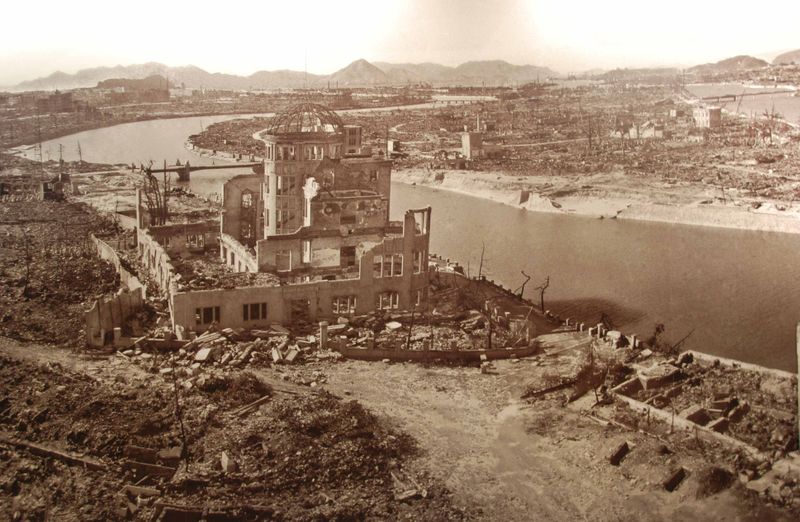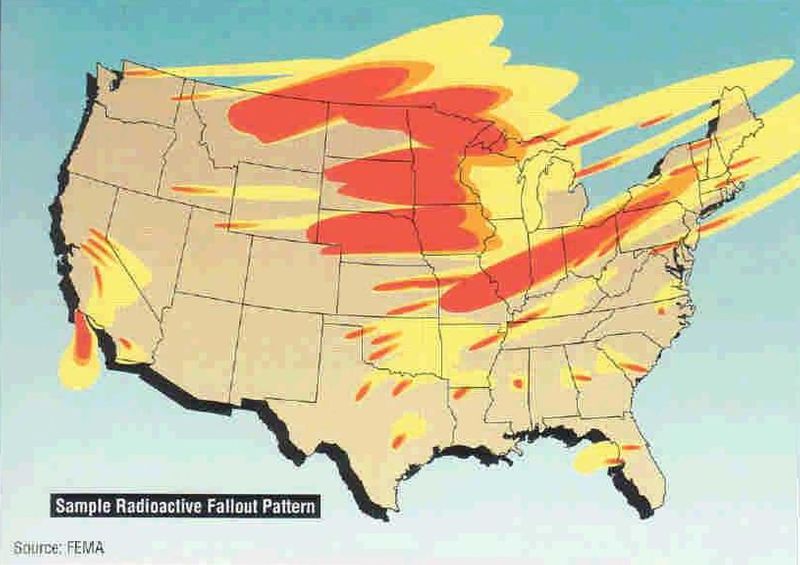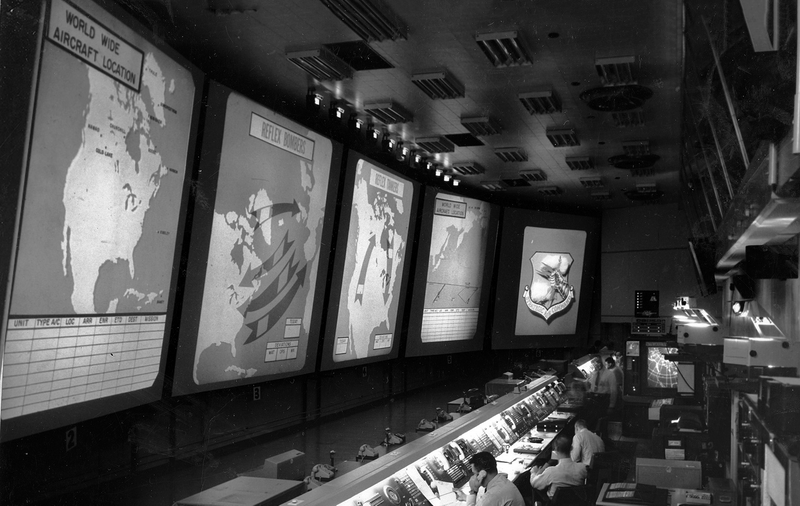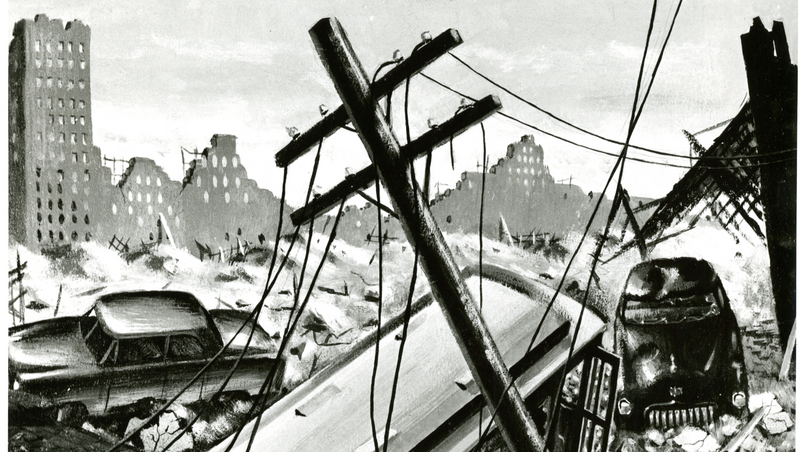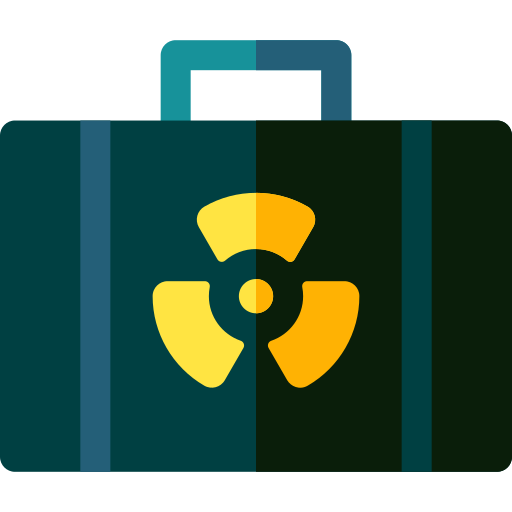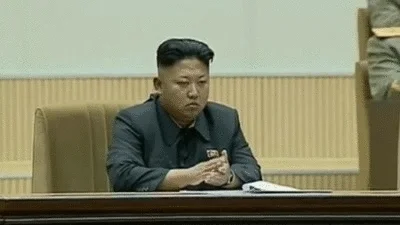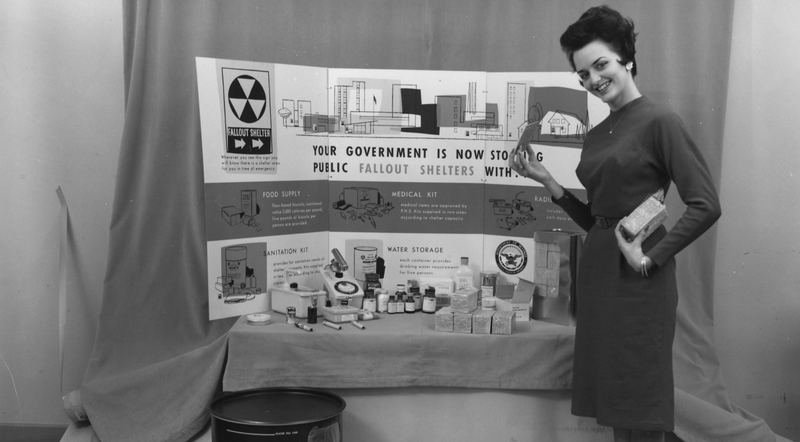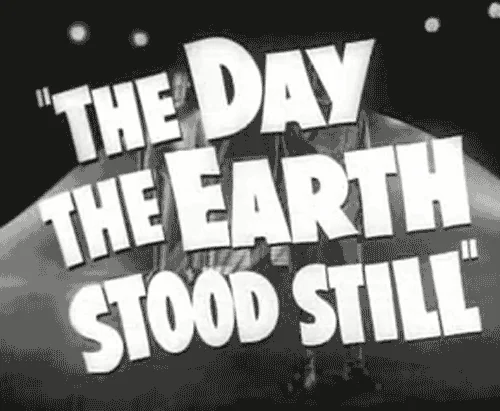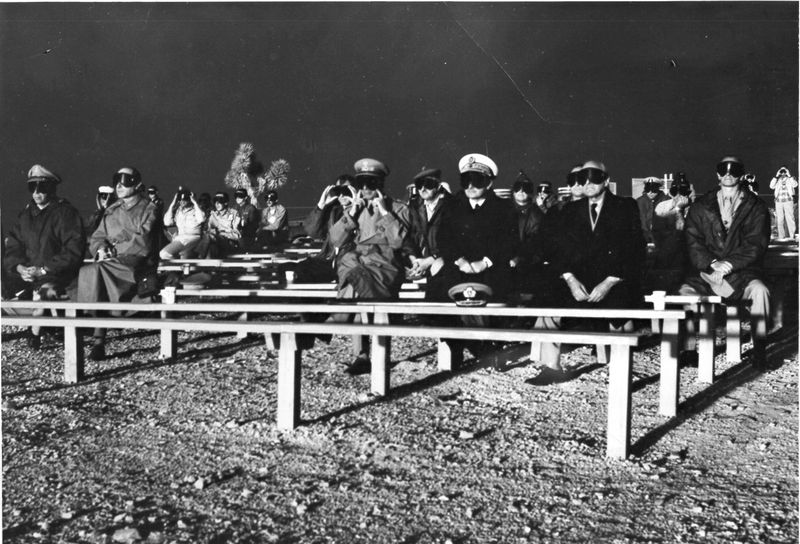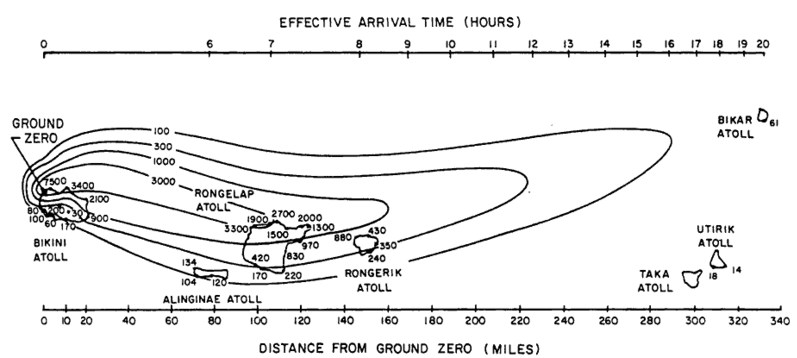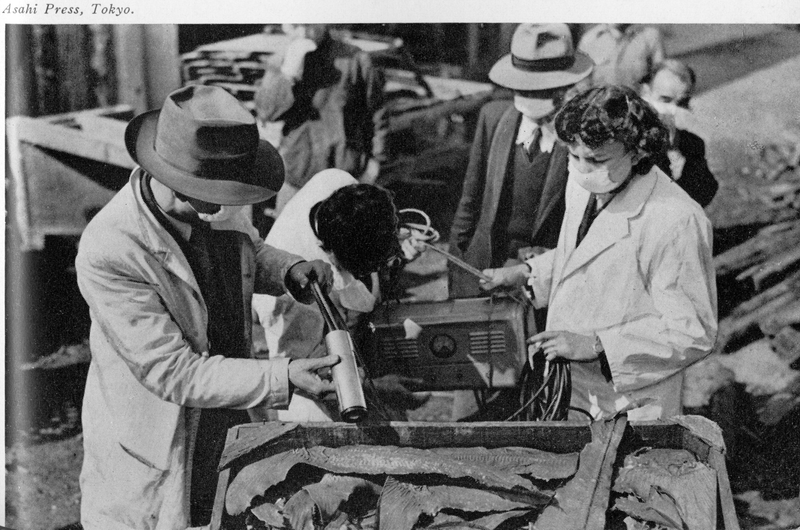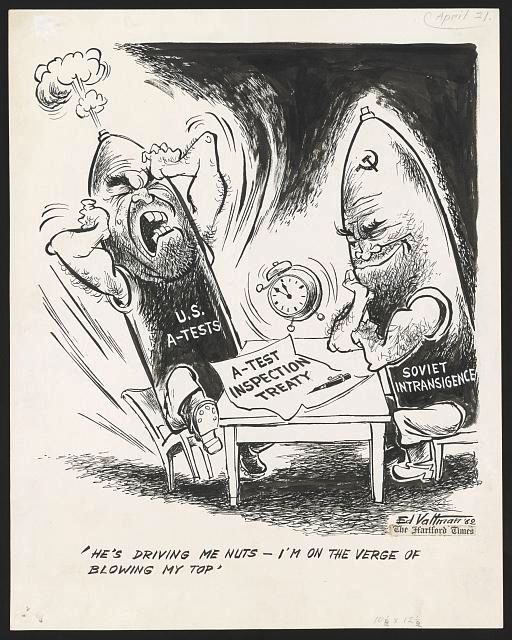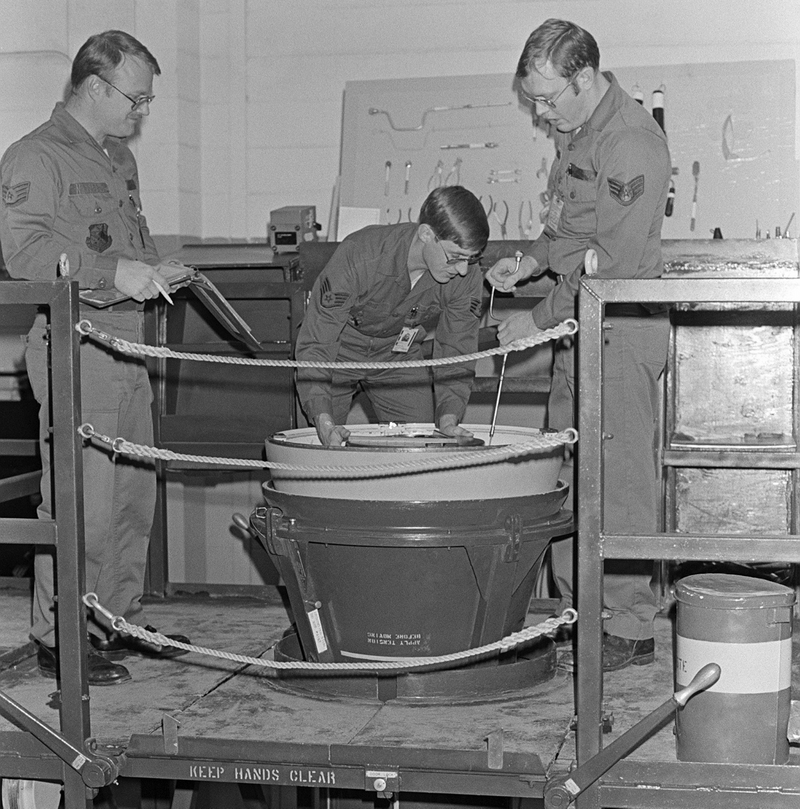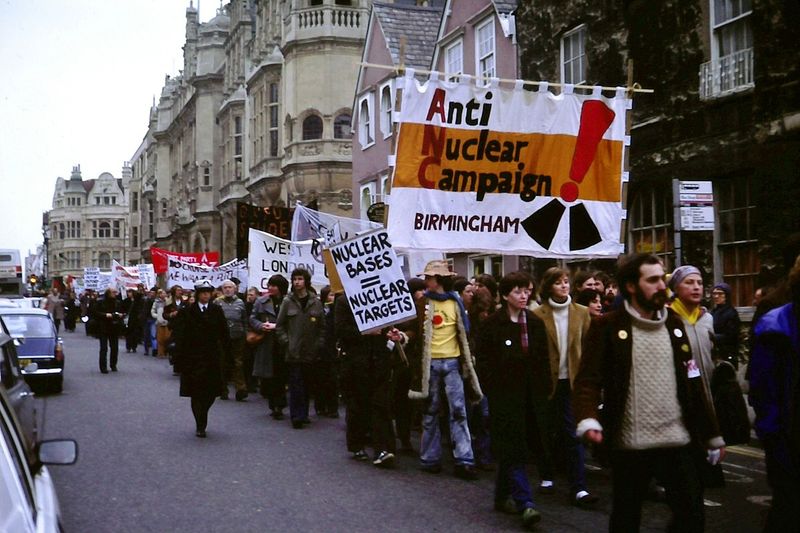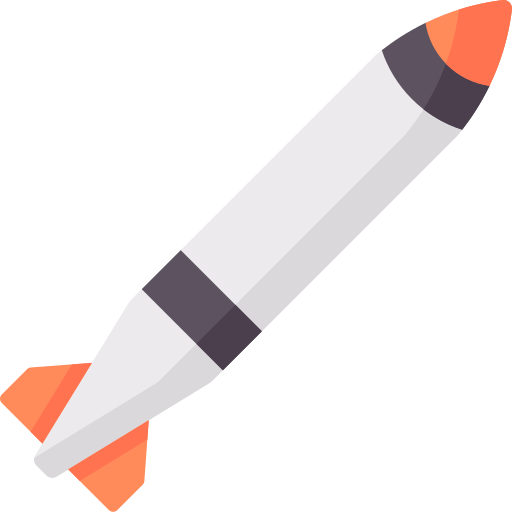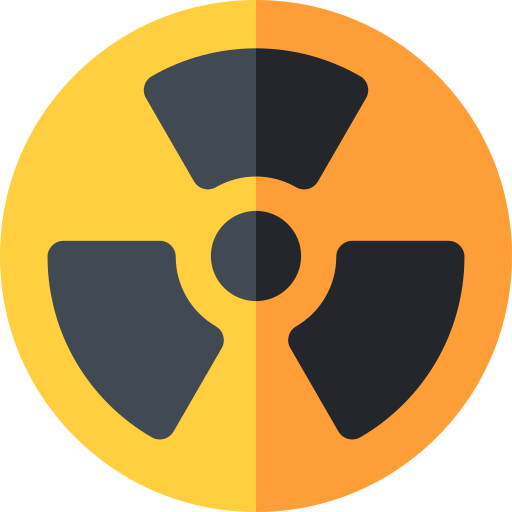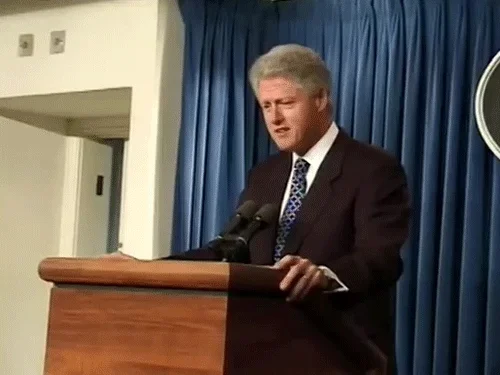
This logo isn't an ad or affiliate link. It's an organization that shares in our mission, and empowered the authors to share their insights in Byte form.
Rumie vets Bytes for compliance with our
Standards.
The organization is responsible for the completeness and reliability of the content.
Learn more
about how Rumie works with partners.
Nuclear weapons are enormously destructive.
Their harrowing impact on the Japanese cities of Hiroshima and Nagasaki is well known.
Fortunately, no country has used nuclear weapons in a conflict since.
This is a remarkable feat. Rarely are weapons made, used twice, and never used again. So how has the world avoided nuclear war for over 75 years and counting?
Leaders and thinkers who spend their careers grappling with nuclear weapons and theories of deterrence may be a reason we haven't seen nuclear attacks like those that ended World War II.
Citizens from the world over who have pressured governments to pursue arms control agreements and who have called on their leaders to rethink the role nuclear weapons should play in national security could be another reason.
Perhaps it's because the world universally accepts that these weapons are too horrible to use.
Maybe we should chalk it all up to sheer luck.
Luck certainly has much to do with it. But letting fate take the wheel makes it too easy not to think about these weapons.
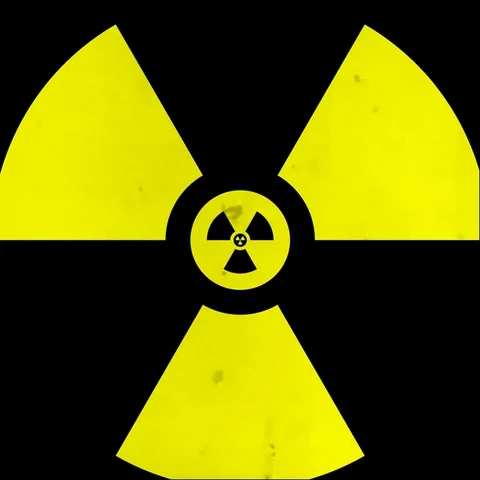
As uncomfortable as it may be, nuclear weapons deserve serious thought.
With careful management, we can reduce the likelihood these weapons will be used again.
It also shouldn't be ignored that even in relative peace, these weapons have profoundly shaped the lives of many.
Anatomy of a Nuclear Explosion
The image of a mushroom cloud is likely the first thing that comes to mind when you think about nuclear explosions.
Mushroom clouds are so ingrained in our imagination that it's easy to mistake a conventional explosion for a nuclear one when we see this familiar shape.
But there's much more to know about a nuclear explosion than meets the eye.

Nuclear Weapon Effects
The effects of a nuclear explosion depend much on the size of the weapon and where it explodes.
Here, we'll focus on the most important things to know.

Prompt Effects
Ground zero: The point on, in, or above the Earth where a nuclear weapon detonates.
Direct radiation: When a nuclear reaction occurs, direct radiation is released. This radiation is composed of neutrons and gamma rays. Depending on the size of a blast, it can travel for miles. Though lethal, other blast effects can reach greater distances.
Fireball: When a nuclear weapon explodes, it liquefies and turns into gas that reaches similar temperatures as the sun. This gas heats the surrounding air and a fireball forms. Again, much depends on the weapon's size, but a fireball can glow brighter than the sun.
Thermal Flash: The radiated heat released by a fireball is called a thermal flash, which is so hot that it can ignite fires from miles away. It can also leave victims with severe burns.
Blast Wave: A blast wave is created when the air around a fireball compresses. The blast wave then travels outward at high speeds, destroying buildings and structures.
Firestorm: Fires ignited by thermal flash and the destruction left in the blast wave's wake can get so intense that wind is created, which fuels a firestorm.
Long Term Effects
Nuclear explosions are different from conventional explosions in a significant way: they create radioactive fallout.
Fallout is made of radioactive material — dirt, debris, and particles created during a nuclear reaction — which falls back to Earth after an explosion. Some particles take days to break down, while others take months or years.
Most radioactive fallout will settle near ground zero in the days after an explosion.
Thermonuclear weapons have made global fallout possible.
These weapons are so powerful that radioactive particles get shot high into the atmosphere. Wind can spread these particles around the globe before they return to Earth.
Types of Nuclear Explosions
The level of fallout produced by a nuclear explosion depends significantly on where it occurs.
Subsurface burst: An underground explosion.
Air burst: An explosion in the atmosphere.
Surface burst: An explosion near the Earth's surface. These explosions create a lot of fallout, as a tremendous amount of radioactive debris, dirt, and dust is kicked up into the air.
After the Dust Settles

Thinking about the human cost of nuclear weapons isn't pleasant. But experts, whose job is to think about these weapons and their risks, find ways to do so. In many ways, thinking about these weapons in abstract terms is necessary.
Regardless of your views on the role nuclear weapons should play in international politics, it's vital to be reminded of their real-world consequences.
Planning Nuclear War
The United States and other countries plan for nuclear use, even if they hope such plans never have to be implemented.
Throughout the Cold War, plans included attempts to give leaders more flexibility and precision in selecting targets for nuclear strikes. In other words, leaders wanted options that didn't automatically escalate to a full-scale nuclear exchange.
However, it's best to remember that even precise, limited nuclear strikes could still be devastating.
 Limited Nuclear War
Limited Nuclear War
In this scenario, a country might attempt to use nuclear weapons to end a conventional war swiftly.
Strikes might be limited to an adversary's military bases and critical economic centers. There could be millions of injuries and deaths. Worse, such a war might quickly escalate to a full-scale nuclear war.
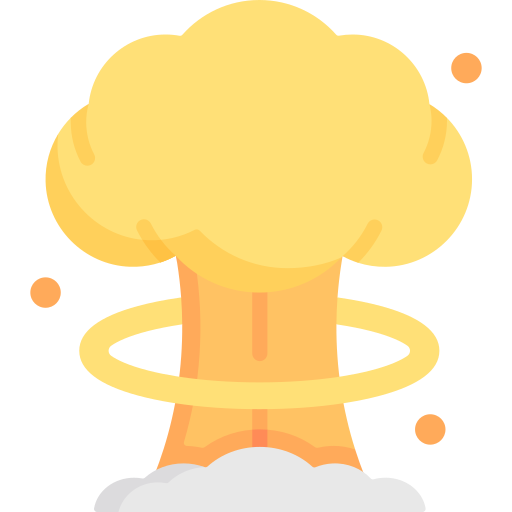 Full-Scale Nuclear War
Full-Scale Nuclear War
If a full-on nuclear exchange between Russia and the United States — which together have nearly 90% of the world's nuclear weapons — occurred, it would be unimaginably catastrophic.
Hundreds of millions of lives would be lost quickly, and upwards of 5 billion people could be indirectly killed.
The Day After
Survivors would have severe burns and other injuries. But where would people go for medical care?
Hospitals in cities would likely be destroyed, along with the many other things we take for granted that keep society running.
Nuclear fallout would cover the United States. Water, air, and food would be contaminated. And survivors would be at risk of disease and starvation.
But the effects would not be limited to the countries participating in a nuclear exchange.
Those worried about climate change will be familiar with the ozone layer, which blocks the sun's ultraviolet radiation.
A nuclear exchange could release so many chemicals that a hole would be torn right through the ozone layer, drastically increasing the world's exposure to radiation.
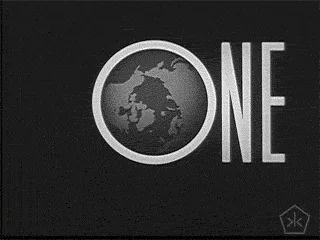
Nuclear Winter?
You've likely heard of this term but may not know its meaning.
It's hypothesized that the fires ignited during a nuclear exchange — even a relatively small one — could produce enough smoke and soot to block out the sun, lowering the Earth's temperatures.
Nuclear winter would be an extinction-level event in which much of the earth's plants and wildlife would die out.
This hypothesis was popularized by the famous astronomer Carl Sagan in the early 1980s.
In the years since, scientists have found that the consequences of nuclear war might not be quite as severe as Sagan estimated — though it would still be devastating.
Meanwhile, certain corners contend that the aftermath of a nuclear war would look less like a nuclear winter and more like a "nuclear autumn."
There's still much debate on the topic. In any case, it's best to avoid finding out.
Rogues, Terrorists, Accidents, and Mishaps

There are an estimated 12,500 nuclear weapons in the world. Even if cooler heads continue to prevail and these weapons are never purposefully used, there's always a possibility that accidents might occur.
Being informed about the risks is essential to lower the odds.
Broken Arrows
This is a US military term that refers to nuclear weapons-related mishaps. This term includes theft, unauthorized or accidental launches, and other accidents.
One of America's most infamous broken arrows occurred in Damascus, Arkansas. During routine repairs on a missile tucked into its silo, a wrench pierced a hole in the rocket. Though the missile exploded, its warhead, fortunately, didn't go off.
The US government publicly admits to 32 broken arrows.
Loose Nukes
Broken arrows also include lost weapons. America is reportedly missing six of them.
During the Soviet Union's collapse in the 1990s, there was much concern about the fate of the country's 27,000 nuclear weapons. It was feared that the weapons, spread across Russia and three other former Soviet republics, could get into the wrong hands.
One former Soviet general claims 100 suitcase-sized weapons went missing.
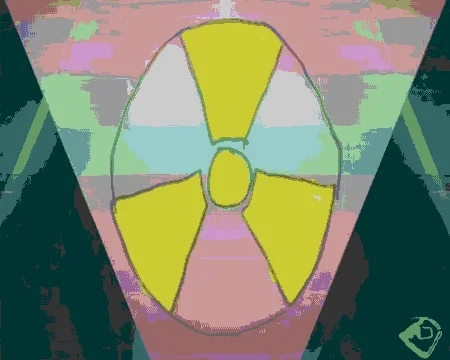
Nuclear Terrorism
An organization can engage in nuclear terrorism by stealing a nuclear device, weaponizing nuclear materials, or creating a "dirty bomb", a conventional explosive that releases radioactive material.
Managing nuclear terrorism presents challenges.
Terrorists are non-state actors who, unlike countries, don't have a "return address." In other words, nuclear deterrence doesn't easily apply to terrorists.
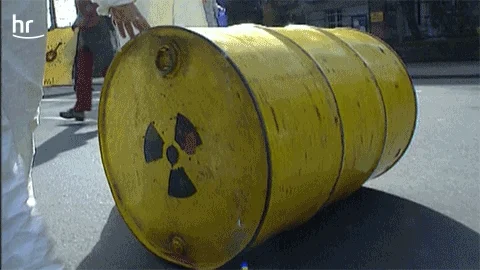
The risk of nuclear terrorism isn't zero, but this shouldn't be cause for undo alarm.
Many things can be done to reduce the threat. Informed people also say significant barriers make things difficult for those who wish to do harm.
Individuals and groups can perpetrate nuclear terrorism in several ways:
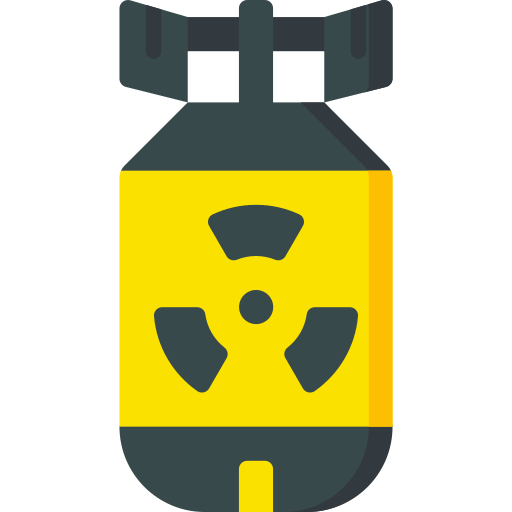
1. Developing an improvised nuclear device: Thiswould be very expensive and time-consuming. It would also require a lot of scientific expertise.

2. Dirty bomb: Perhaps the most likely scenario, but terrorists could easily be exposed to radioactive material during construction. And since the radiation would disperse, a dirty bomb would be the least deadly scenario.

3. Sabotage at a nuclear power plant: This would be destructive, but heightened security and safety protocols could make it more difficult.

4. Loose (or gifted) nukes: Terrorists could buy, steal, or receive nuclear weapons or materials from nuclear-armed countries. However, security devices protect today's weapons, and governments should be wary of handing out weapons since materials could be traced back to them.
Rogue States
For many, the prospect of so-called rogue states— countries run by authoritarian regimes which violate international law and are shunned by the international community — acquiring nuclear weapons is considered particularly dangerous.
It's often feared that these countries could share weapons of mass destruction with terrorists. Unlike other nuclear-armed states, rogue states are sometimes considered irrational and more likely to use nuclear weapons.
While nuclear proliferation is a concern, it's unclear if rogue states treat nuclear weapons differently than any other country.
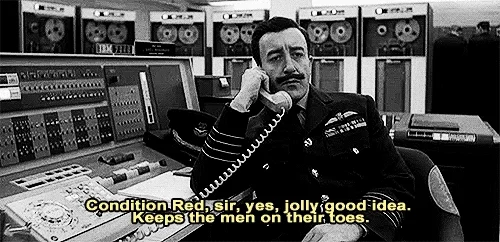
Accidental Escalation
Nuclear-armed countries must be careful to avoid miscommunicating with each other. Accidents become more likely during moments of heightened geopolitical tension. Crises and conflicts may spin out of control and lead to nuclear use, even if unintended.
Close calls have happened.
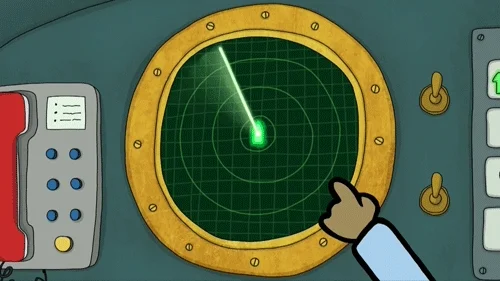
But there are a few things nuclear-armed countries can do to prevent accidental escalation:
🔒 Modern American nuclear weapons are secured with permissive action links. These are essentially locks that require codes to unlock.
☎️ Hotlines — such as that established between the United States and the Soviet Union after the Cuban Missile Crisis — enable direct communication between leaders of adversarial countries.
🛰️ Countries can make it easier to distinguish nuclear weapons systems from conventional weapons systems. In case of war or cyber-attack, this would mitigate the chances that an adversary's nuclear capabilities are accidentally targeted.
🚨 Countries can lower the alert status of their nuclear weapons
🤝 Arms control agreements are perhaps the best solution.
"Thinking About the Unthinkable"
Civil Defense
Can anything be done to stay safe during a nuclear attack?
During the Cold War, the United States and the Soviet Union had government agencies devoted to keeping their citizens informed and safe in case of a nuclear attack.
The agency was called the Federal Civil Defense Administration (FCDA)in the United States.

FCDA efforts included the distribution of pamphlets, safety manuals, cartoons, public service announcements, and plans to construct shelters. DIY bomb shelter kits and instructions were advertised to suburban families.
You may have seen images of children hiding underneath desks in the 1950s.
Ducking and covering may seem silly today — and it was easy to scoff at then, too — but it did make some sense. When the above PSA aired, the United States and the Soviet Union had fewer weapons and capabilities than they had later in the Cold War.
A full-on nuclear exchange would have been terrible but less intense than what could happen today. If there was some distance between you and ground zero of a blast, hiding under a table could have prevented injuries from debris.
Making Nuclear War Thinkable?
Many peace activists slammed civil defense efforts for stoking fear or providing citizens with a false sense of security.
If nuclear war was believed to be survivable, would governments be more likely to start and fight one?
Some strategists, like Herman Kahn, argued robust civil defense would allow America to act more forcefully in nuclear crises. He also boldly claimed that society could easily be put back together after a nuclear war.
Indeed, some Americans saw Soviet civil defense as evidence that Moscow believed it could fight and win a nuclear war.
Giving it Some Thought
Historians note that US government civil defense planners were often motivated by a genuine desire to reduce the number of people hurt in a nuclear attack.
Also, civil defense wasn't as prominent in the Cold War as we think. Americans sometimes performed evacuation and safety drills, but the US Congress was often reluctant to fund the FCDA and feared it could chip away at America's liberties.
Rethinking Civil Defense
American civil defense fell out of fashion in the late 1980s and early 1990s.
Some say civil defense, when done right, was informative and encouraged people to think critically about nuclear weapons and their dangers. The influence of Cold War civil defense is seen today in how we plan for other, more common emergencies and crises.
Perhaps more education on nuclear weapons could have reduced the panic which swept over the United States in 2018 when people in Hawaii were falsely alerted to inbound ballistic missiles.
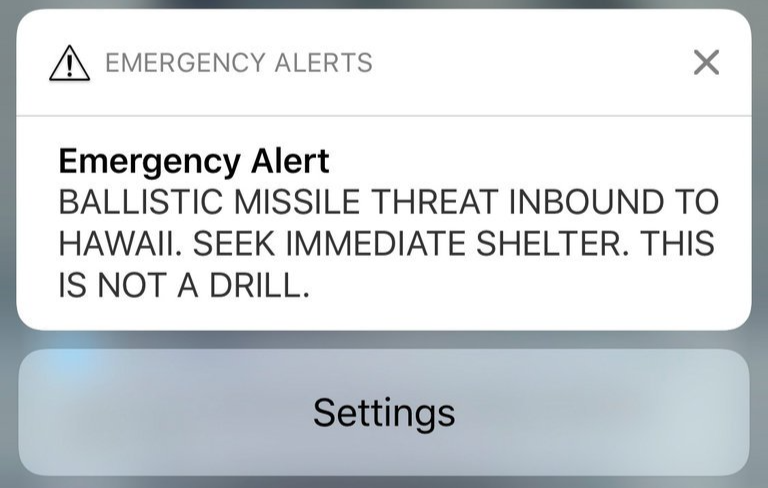 A screenshot of the false alert Hawaii's residents and visitors received on their phones in 2018.
A screenshot of the false alert Hawaii's residents and visitors received on their phones in 2018.
Atomic Culture
Popular culture also channeled the Cold War era's nuclear anxiety.
Though pop culture often oversimplifies things, it can also provide an outlet to discuss and make sense of current issues.
Before nuclear weapons existed, they were the work of science fiction.
H.G. Wells wrote about atomic bombs dropped from the sky onto cities in his 1914 book The World Set Free.
Comic books dealt with the unknown potential of nuclear technology.
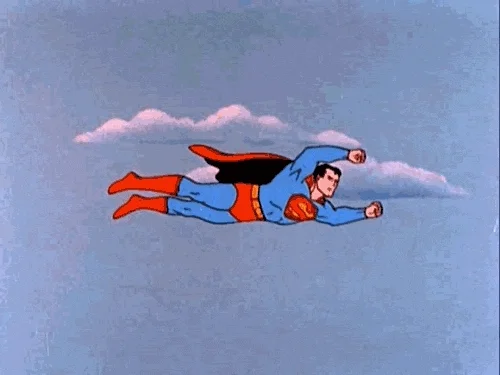
During World War II, the Manhattan Project reprimanded DC Comics' Superman when a storyline featured a cyclotron.
Later, characters showed how nuclear energy could be used for peace and war.
The powers of Marvel superheroes like Spider-Man, the X-Men, and the Hulk were mutations caused by radiation. Superpowers, like nuclear energy, could do a lot of good or a lot of bad.
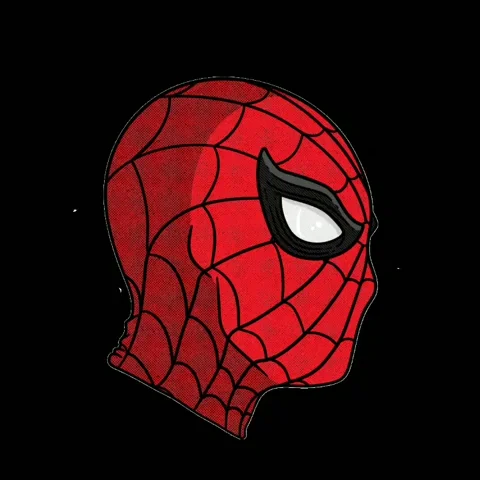
Movies and television took various approaches in their depictions of nuclear weapons.
In the 1950s, the space race between the superpowers was on. The frontiers of science appeared limitless, but progress uneasily existed side-by-side with destruction.
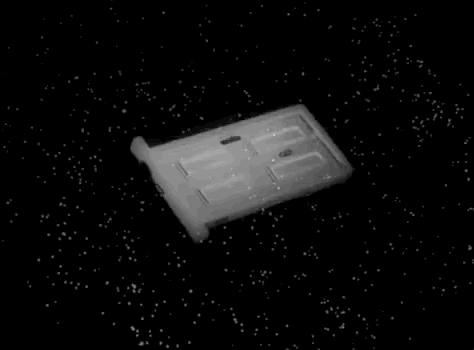
Science fiction movies like The Day the Earth Stood Stilldealt with issues of war and peace in the atomic age.
Japan's Godzilla showcased the health effects of nuclear weapons. Godzilla appeared to many American audiences as a campy movie monster, but there was more to it. The monster was reawakened and irradiated from a US hydrogen bomb test in the South Pacific.
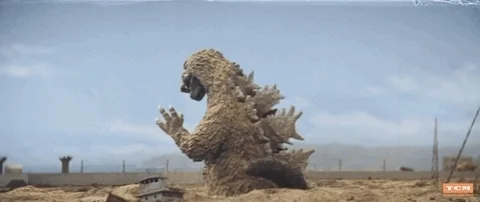
The Twilight Zone, which appeared on American television, was no stranger to criticizing nuclear weapons and the Cold War, with its messages delivered as allegories.
In the face of doomsday, some American filmmakers laughed.
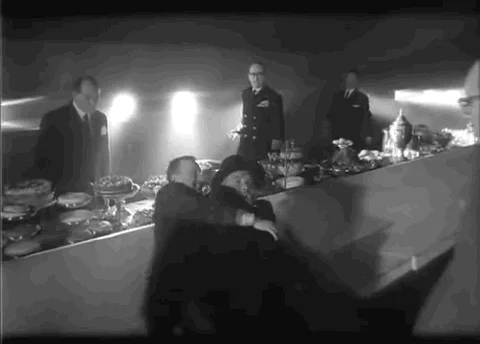
Stanley Kubrick's Dr. Strangelove or: How I Learned to Stop Worrying and Love the Bomb is likely the most well-known movie about the Cold War arms race.
The dark comedy skewered such concepts as nuclear deterrence and starred a character inspired by the likes of Herman Kahn.
In the 1980s, some television programs took a more direct approach to discussing nuclear weapons.
Most infamously, the TV movie The Day After featured a dramatic rendering of nuclear Armageddon, which shocked viewers, including US President Ronald Reagan.
Did you know?
Science fiction also found its way into public debates on nuclear weapons policies. US President Ronald Reagan's missile defense initiative was commonly referred to as Star Wars.
Nuclear Testing
There have been more than 2,000 nuclear tests since 1945. Most of these were conducted by the United States and the Soviet Union (now Russia) during the Cold War.
These tests have shaped our world.
While nuclear weapons tests have historically been conducted far from major population centers, radioactive fallout can travel far and wide. Radioactive particles can enter the food chain and get passed from one organism to another.
It's not just nuclear tests, either: uranium mining for nuclear weapons and nuclear energy has also had damaging effects.
Nuclear Test Sites
More often than not, the most harmful effects of nuclear weapons tests have been felt by soldiers — who sometimes performed drills during or in the aftermath of nuclear tests — and Indigenous communities.
The following list of test sites isn't exhaustive — there are many more stories to be told. It instead highlights how tests have impacted communities and disrupted traditional ways of life.

Nevada, United States
Radioactive dust from atmospheric nuclear testing in Nevada tended to blow in the direction of Mormon and Indigenous communities in Nevada, Arizona, and Utah. Those affected are often called "downwinders."
Many adults remember childhoods defined by the beeps of Geiger counters, tablets to block the effects of radiation, and mushroom clouds.
One study on downwinders has found that they have increased diagnoses of various forms of cancer. Nuclear testing has also been linked to autoimmune diseases and miscarriages.
Kazakhstan, Soviet Union
The Soviet Union conducted more than 450 nuclear tests at Semipalatinsk in Kazakhstan.
Locals living near ground zero were often not adequately informed before tests. It's estimated that upwards of 1.5 million people were subjected to high doses of nuclear radiation. Consequences included cancers, congenital disabilities, and other illnesses.
The Soviet Union also tested nuclear weapons and dumped radioactive waste in the Russian Arctic. At Novaya Zemlya, people were forcefully removed from their villages to make room for the test site.
French Polynesia
France conducted tests in its overseas possession of French Polynesia from 1966-1996.
News that France downplayed the effects of its atmospheric tests in the 1960s and 70s recently made headlines. Declassified documents reveal:
90% of the 125,000 people who lived in French Polynesia were exposed to radioactive fallout.
French authorities often failed to warn local populations adequately.
Wind patterns were miscalculated during a test in 1974, and the population of Tahiti (87,500 people) was exposed to fallout.
Coral reefs were destroyed, and fish populations were poisoned.
Australia
The United Kingdom tested weapons in Nevada. They also tested on Kiribati, islands off the coast of Australia, and in the Australian desert at Miralinga and Emu Field in the 1950s and 60s. Australian and British soldiers were exposed to radiation.
Sites in the Australian desert were home to Indigenous people, who, at the time, lacked Australian citizenship. They were often not provided adequate warning of upcoming tests. The land they occupied was contaminated, and many fell ill.
The British government has been slow to acknowledge its full responsibility for health-related issues afflicting soldiers and Indigenous peoples.
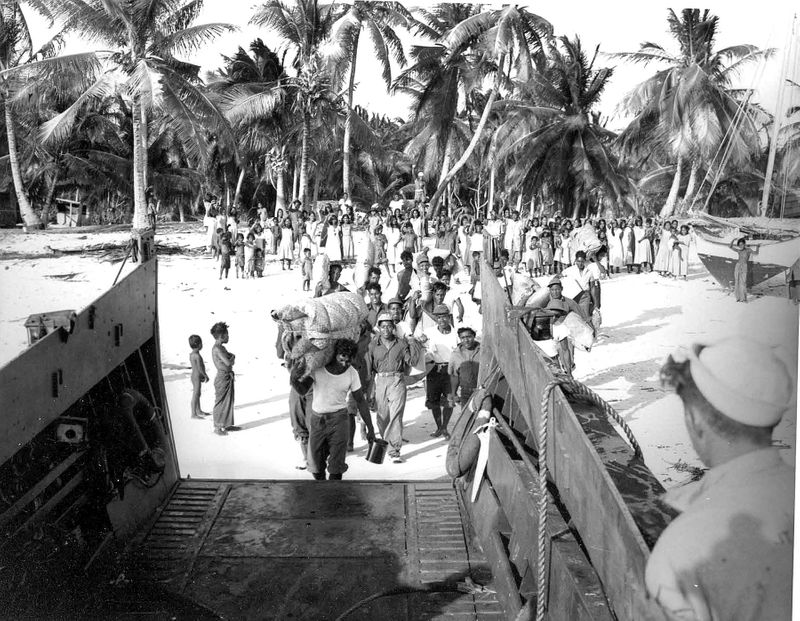
Bikini Atoll, Marshall Islands
The United States also tested nuclear weapons in the Marshall Islands, located in the South Pacific. The United States forcibly relocated inhabitants to prepare test sites. Many people never returned to their homes because their land was contaminated.
The Marshall Islands was where the United States tested its first hydrogen bomb. Check out this Byte to learn more about hydrogen bombs.
It was also the Marshall Islands where perhaps one of the most infamous American nuclear accidents occurred.
Castle Bravo and Lucky Dragon
The United States underestimated the size of a 1954 hydrogen bomb test — codenamed Castle Bravo — which was much more powerful than expected. The explosion sprayed fallout on US sailors and Marshall Islanders and a Japanese fishing boat named Lucky Dragon no. 5 (or Daigo Fukuryū Maru, in Japanese).
The boat's fishermen fell seriously ill, and one eventually passed away later that year from radiation sickness. In Japan, the incident stoked fear of contaminated fish stocks.
This incident also set in motion events that would culminate in the first nuclear arms control agreement — the Limited Test Ban Treaty (LTBT).
Test Ban Activism
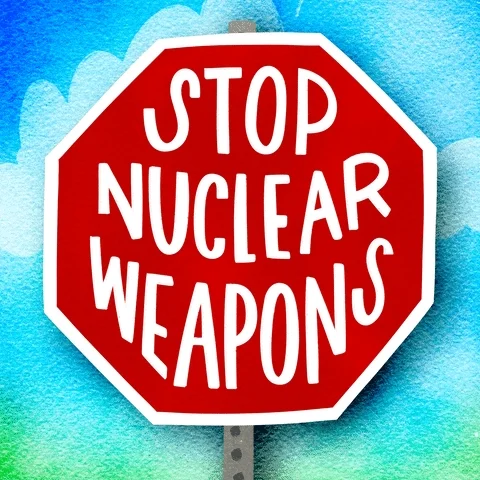
In 1963, the United States, the Soviet Union, and the United Kingdom signed the Limited Test Ban Treaty.
The treaty underscored the nuclear powers' shared interest in managing nuclear weapons. It was also an acknowledgment that nuclear testing was a global issue.
International Outrage
The Lucky Dragon incidentsparked global outrage against nuclear weapons, testing, and America's nuclear arsenal. US policymakers privately worried that international opinion was turning against the United States.
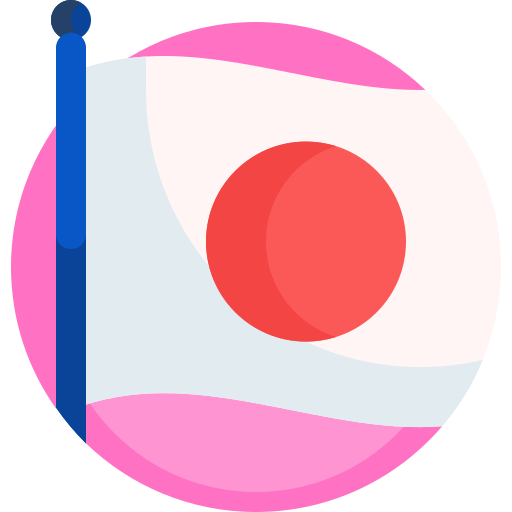 Japan
Japan
Japan was once again the victim of nuclear weapons. Its media devoted much attention to the incident. Among Japanese citizens, there was a groundswell of protest and anti-American sentiment.
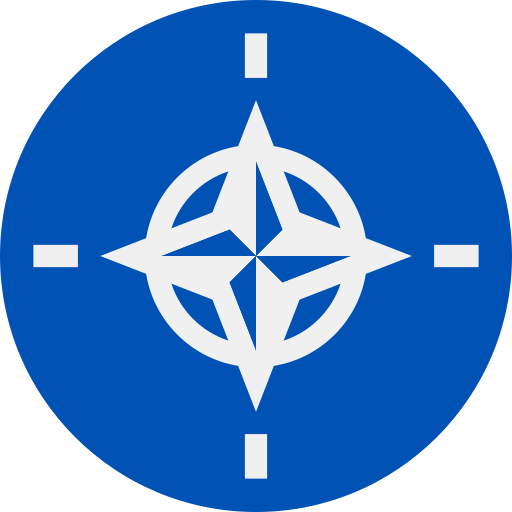 Western Europe
Western Europe
Protest movements in Western Europe formed in opposition to nuclear weapons and nuclear weapons testing.
This presented challenges to the US government and the North Atlantic Treaty Organization (NATO), which increasingly relied on American nuclear weapons for Western Europe's defense.
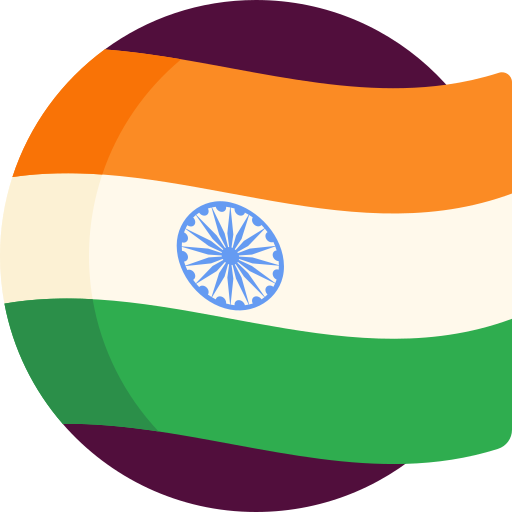 India
India
India's Prime Minister, Jawaharlal Nehru, condemned America's nuclear program in stark terms:
It is it of great concern to us that Asia and her peoples appear to always be nearer these occurrences and experiments and their fearsome consequences, actual or potential.
India took the lead in the United Nations,as countries neither aligned with the United States nor the Soviet Union condemned nuclear weapons and tests and issued calls for disarmament.
 Soviet Union
Soviet Union
The Soviet Union used this negative public opinion to its advantage.
Though the USSR also had nuclear weapons, this didn't stop Moscow from presenting disarmament proposals to score propaganda points. In response, America submitted proposals of its own.
However, little progress was made in the early 1950s toward arms control as neither Washington nor Moscow could agree on how to inspect and verify any agreement.
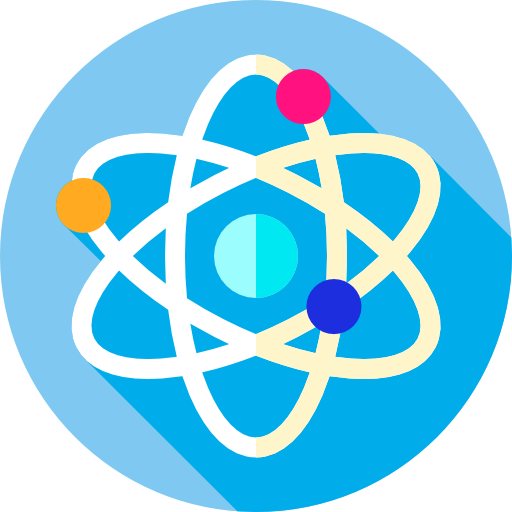 Scientific Community
Scientific Community
The 1950s were notable for anti-nuclear activism, which swept across the United States and Western Europe. Activists included everyday people, celebrities, businesspeople, and politicians.
Groups were formed like the National Committee for a Sane Nuclear Policy (SANE) to spur debate on nuclear issues and organize rallies.
Scientists, such as the chemist Linus Pauling, were some of the most influential people in this movement.
They informed the public about the dangers of nuclear testing and fallout. They also formed organizations with their colleagues from around the globe.
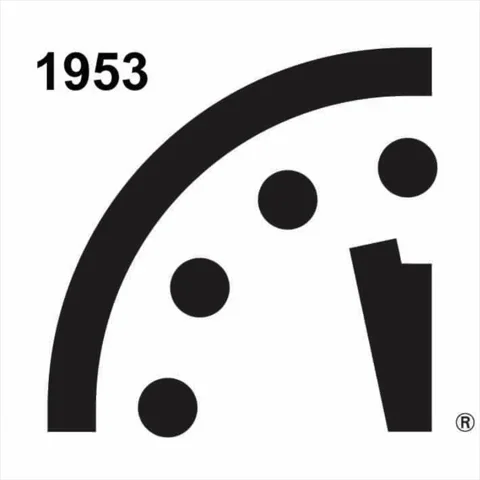 The Doomsday Clock warns of how close the world is coming to nuclear annihilation.
The Doomsday Clock warns of how close the world is coming to nuclear annihilation.
Some of the most notable scientists were affiliated with the Pugwash Movement, which held international conferences to discuss pragmatic steps toward addressing nuclear risks.
American and Soviet scientists played important roles in early negotiations toward a Limited Test Ban Treaty.
 America and the Test Ban
America and the Test Ban
Americans generally held positive views of nuclear weapons after World War II, but opposition grew.
By the mid-1950s, there was mainstream debate about nuclear weapons and the role they should play in American foreign relations.
Public awareness was due, in no small part, to the advent of the hydrogen bomb and to journalist John Hersey's expose of the bombing of Hiroshima.
President Dwight D. Eisenhower tried to highlight the peaceful uses of nuclear energy to counteract the outcry against nuclear weapons.
Nevertheless, Eisenhower supported a test ban for public health reasons relating to the effects of radioactive fallout.
The United States and the Soviet Union halted nuclear testing in 1958, and negotiations for a ban were underway. But by 1961, negotiations stalled when the Soviets resumed testing, and the Americans quickly followed suit.
Why Have Nuclear Tests?
In 1963, Eisenhower's successor, US President John F. Kennedy, and his British and Soviet counterparts signed the Limited Test Ban Treaty. The close call of the 1962 Cuban Missile Crisis had given test ban negotiations more momentum.
On the one hand, the limited test ban treaty was a significant achievement for arms controllers. But on the other, it was an agreement of compromise.
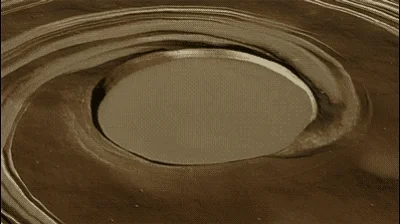
Putting the "Limited" in the Limited Test Ban Treaty
This treaty prohibits nuclear tests in the atmosphere, underwater, and outer space.
But testing continued as it moved underground.
Underground nuclear tests did put a lid on some of the most harmful effects of testing. But not all. Radiation still leaked through the ground.
Meanwhile, critics charged that the world would grow complacent as testing moved farther from the public's view.
Missed Opportunity?
Calls to completely end nuclear testing continued through the Cold War. Many argued that a comprehensive ban would address all the environmental and public health consequences of testing — and curb nuclear proliferation.
Some argued that a comprehensive test ban would:
Hinder the ability of countries developing nuclear weapons to test prototypes.
Deny countries the prestige of testing and acquiring nuclear weapons.
Show the international community that nuclear powers were making a good-faith effort to reduce the role of nuclear weapons in their national security policies.
Half-measures and Missteps
However, progress toward a truly comprehensive test ban was slow.
📍 The United States and the Soviet Union signed treaties to limit the size of underground nuclear weapons tests and peaceful nuclear explosions in the mid-1970s.
📍US President Jimmy Carter made an unsuccessful effort to negotiate a comprehensive test ban in the late-1970s.
📍 Near the end of the Cold War, American and Soviet leaders were under tremendous public pressure from the global nuclear freeze movement to end the testing and production of nuclear weapons.
At nearly every corner, efforts in this direction were resisted and blocked by groups within the US military and Congress.
Cold War critics of a comprehensive test ban often made the following arguments:
 Verification
Verification
Cold War geopolitical tensions made it difficult for Washington to trust that Moscow wouldn't cheat. It didn't help that the Soviet Union was a notoriously secretive country and usually wasn't too happy to have Western inspectors poking around their territory.
For much of the Cold War, it was argued that technology hadn't progressed far enough to detect underground nuclear explosions.
While above-ground tests were a bit easier to monitor — you could detect radiation in the atmosphere — underground tests required the ability to distinguish a nuclear explosion from an earthquake.
Some thought the Soviets could gain a great advantage from low-yield tests, the explosions of which couldn't be detected. This advantage could be in the form of more reliable weapons. Or it could be the result of more experienced nuclear weapons scientists.
Modernization
Tests, it was argued, were necessary to update pre-existing nuclear weapons and design new ones.
Tests were seen as necessary to improve the accuracy of weapons.
Weapons and other military equipment needed to be exposed to nuclear blasts to see how they would hold up in a nuclear exchange.
Safety and security devices needed to be tested.
Risk Not Worth the Reward
Critics also doubted that a comprehensive test ban would provide nonproliferation benefits. Countries could develop nuclear weapons without first testing them.
Most importantly, others argued that a treaty would have little influence on a county's decision to go nuclear. Proliferation, it was argued, had more to do with whether or not nuclear weapons were seen to be essential for national security.
Comprehensive Nuclear Test Ban Treaty (1996)
After the end of the Cold War, the international community negotiated the Comprehensive Nuclear Test Ban Treaty.
The treaty has been signed by 186 countries but has still not gone into effect. It's still waiting on the United States. Although President Bill Clinton signed the treaty, it was rejected by the US Senate.
Nevertheless, none of the five major nuclear powers — the United States, the Soviet Union, the United Kingdom, France, and China — are known to have tested nuclear weapons since the late 1990s.
This is partly due to technological progress: nuclear weapons states have become pretty good at simulating nuclear weapons tests.
This is also partly due to norms developed throughout the Cold War, as people became increasingly aware of the effects of testing and the dangers of nuclear weapons.
Did you know?
Some people believe that nukes can be used peacefully. The idea has been floated that peaceful nuclear explosions (PNEs) could be used in mining or to divert rivers and build canals. Serious studies were conducted by the United States and the Soviet Union during the Cold War on the viability of PNEs. In America, research was conducted under the Project Plowshare program, which even looked at the possibility of using nuclear explosions to widen the Panama Canal.
Take Action
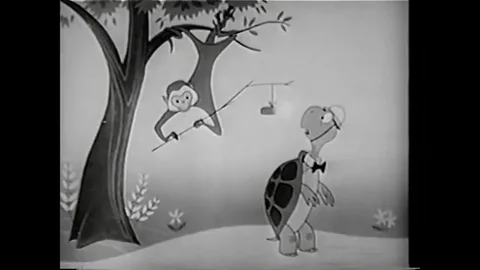
Nuclear weapons tests are fortunately rare these days. The tests which have dominated headlines are those from yesteryear or those conducted in North Korea.
Yet, it's important not to think of nuclear weapons and their consequences as things of the past.
The environmental and health effects of nuclear weapons testing are still with us today, especially among Indigenous communities. And today's geopolitical tensions may lead great powers to test nuclear weapons again.
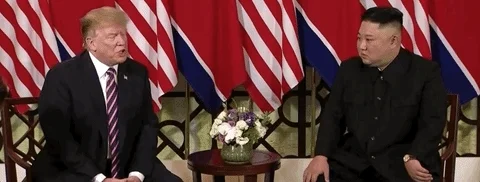
The Trump administration discussed the possibility of the United States ending its decades-long hiatus on nuclear testing in response to unproven allegations of Russian and Chinese tests.
As the war in Ukraine continues to unfold, Russian President Vladimir Putin announced the suspension of Russia's participation in New START — an arms control treaty with the United States that limits the deployment of strategic nuclear warheads — and threatened to resume nuclear testing.
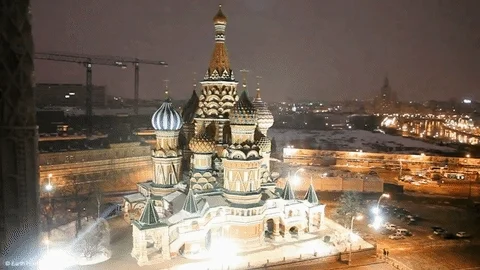
There are many conclusions reasonable people can make about the role nuclear weapons should play in national security. Still, we must consider whether any of these roles require nuclear testing.
After all, it's informed citizens like you who have influenced government discussions in the past.

Are you interested in learning more about the risks and effects of nuclear weapons so you can think thoughtfully about the unthinkable?
See what's being said by the experts:
You can also check out these episodes from Eurasia Group Foundation's podcast None of the Above:
The Atomic Bomb's First Victims: Beata Tsosie-Pena & Jay Coghlan on Downwinders
Avoiding Armageddon: Rose Gottemoeller on the Potential for Nuclear War
Russia’s Red Lines: Where the Russia-Ukraine War Stands at One Year
These resources can help as well:
This Byte has been authored by
Lucas Robinson
Foreign Affairs Professional
